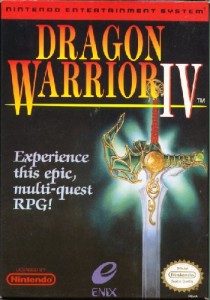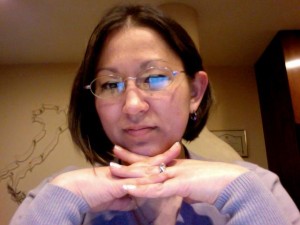 A guest post by Kim May
A guest post by Kim May
I still have nightmares about the time we battled a trio of Mystic Dolls. Those damn things multiplied faster than we could kill them. They killed Mara and Nara first, and Brey soon after. Christo destroyed one with a fire spell before a clone got him in return. Taloon was run through before he could summon the Merchant Army. Ragnar and Alena took down a doll and three clones before succumbing to their wounds. I had to defeat the last doll on my own, surrounded by the bodies of my friends. It may have been my imagination, but I swear I heard Ragnar’s spirit cheer me on as I ran my sword through that doll with a cry of anguish. In the nightmare the last doll doesn’t die, though I know it did because I remember the solitary two day journey back to town with everyone’s bodies piled in the wagon so each could be revived by the local healer.
Are these the opening paragraphs to my new novel? No. I was playing Dragon Warrior IV on the 8 bit NES.
In my family, this was THE game to play. Everyone in the house had a quest in progress and a set amount of time every day in which to play. We had all the maps and stat sheets so we could plan our expeditions. All of us gave my sister a bad time for spending more time doubling down in the casino than leveling up. Mom and I would debate the wisdom of risking life and limb to progress further in the quest versus patiently waiting another ten levels so we could easily slaughter every beastie in our path.
So why did we play this one game over all others, including the previous installments in the Dragon Warrior franchise? This game made us care about the characters.
Dragon Warrior was like many fantasy RPGs in that you had to level up and acquire the necessary items and armors in order to defeat the villain. Where IV differed from the standard RPGs of the day was that not only could you choose the hero’s name, you could choose their gender. For the first time I could be a girl and still win the day without being penalized because heroines in this game had the same HP, magic, and strength of their male counterpart.
Another big deviation from the norm, and what I feel was the game’s best asset, was that you had to play the quests for each of the companions before you could even start the hero/heroine’s quest. At first this may sound annoying but the prologue for each of the four companion quests established who the POV character was and why they had to venture into dangerous places because of the villain’s wrongdoings. It was clear why Ragnar had to rescue the kidnapped children, why Princess Alena didn’t fit in at court, why Taloon could get better prices for weaponry, and why sweet Mara and Nara wanted vengeance.
When the hero/heroine encountered each of the companions in the final quest, each still possessed the XP, weapons, and armor that they had at the end of their individual quests. I could take pride in _________ being an asset to the party because of all the effort I put into their individual quest. It also made their enlistment a happy reunion rather than a burden since I didn’t have to spend half my time healing them in the middle of a battle.
Conversely, when one or more of the companions died it magnified the failure. It became personal. Which of course meant that the next six days were spent leveling up and getting better armor so the next time I encountered that monster I could put its head on a spike.
This is the power of backstory. Whether it’s a video game, a novel, or a bedtime story that you pull out of the aether, backstory is important. Not only does a backstory make characters more realistic, it makes their actions more powerful because the reader knows why they acted a particular way. Mara and Nara’s oath to kill the villain may be noble but it’s the fact that the villain killed their father that makes players silently root for them on their journey. If Ragnar, happened to die in battle during the final quest, the feelings of sadness and anger aren’t simply the product of a bruised ego. It’s the product of the indebtedness players felt because Ragnar was responsible for saving the juvenile hero/heroine’s life in the first companion quest. And as players, we had a front row seat for all of it.
So the next time you create a story, take some time to think about what happened before page one. Your readers/players/listeners will thank you for the effort.
 Kim May writes sci-fi and fantasy but has been known to pen a gothic poem or two. She works at an independent bookstore and dog/house sits on the side. A native Oregonian, she lives with her geriatric cat, Spud, and spends as much of her free time as she can with family and friends. She recently won The Named Lands Poetry Contest. If you would like to find out what she’s working on, please visit her blog.
Kim May writes sci-fi and fantasy but has been known to pen a gothic poem or two. She works at an independent bookstore and dog/house sits on the side. A native Oregonian, she lives with her geriatric cat, Spud, and spends as much of her free time as she can with family and friends. She recently won The Named Lands Poetry Contest. If you would like to find out what she’s working on, please visit her blog.

Enjoyed the post! I was a huge fan of this game, too. Still am. I’ve revisited it a few times on emulators and more recently on the DS. You are absolutely right about the back story getting players more engaged with those characters.
Speaking of leveling up to destroy monsters, I had fun on the emulator using save/load state to defeat metal babbles for thousands of XP.
I’m glad you liked the post. My brother recently introduced me to the emulator and the save/load state is our favorite feature too.